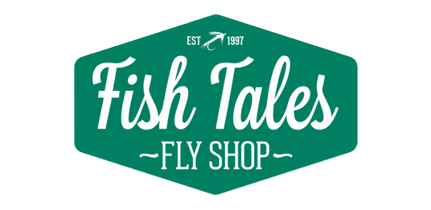Dry fly with a dropper aka Hopper/dropper.
Jul 12, 2018
We often call it hopper/dropper fishing but this technique can be used for far more than the "hopper" season. Big stimulators, adult stones, attractors, caddis, drakes, ants, and terrestrials can all be the 'hopper' in this setup. So essentially, "Dry/Dropper" is a better term.
In jurisdictions (like Alberta) that allow you to fish more than one fly on your setup, fishing a two fly rig offers a quicker way to determine what the fish are keyed in on. You're essentially fishing two food sources in two different parts of the water column which gives you double the opportunity to catch that fish of a lifetime.
Check out this short clip about setting up a dry fly/dropper from our recent episode with Simon Gawesworth and "The New Flyfisher." (You don't need to login to Facebook to watch the clip.)
The annual golden stonefly hatch is an awesome time to experiment with this technique.
For the Bow:
We like size 6 through 10 for the stonefly dry. Favorite patterns are the Skid Bitch (design courtesy of local angler/tier R. Knight), Swisher's LLS Chernobyl in Black, Jake's trigger belly foam, Willie's Ant, Chubby Chuck, Chernobyl,Trina's Stimi-chew toy. There are lots of options. We recommend a 1x or 2x leader to your top fly. Keep in mind: the general rule of thumb is to multiply the number in front of the "X" by four to help give you a guideline of what size hook you should be using (1x for a size 4 or 6 fly; 2x for size 6,8,10 fly, etc.) Remember that the higher the X the thinner the tippet. If your leader is too small (thin) your fly will not turn over correctly or you could end up with a twisted section above the fly. And generally speaking, Bow river fish aren't overly spooky.
For your dropper don't go too heavy (maybe forego the tungsten or double bead flies - you don't want to drag that top fly down.) Smaller beadheads like pheasant tails, hare's ear nymphs, copper johns, lightning bugs, or princes are good options. Folks may opt for caddis emergers, soft hackles, or jig versions of any of the above. Use the rule of multiplication by four to determine the size of tippet you should be running between the top fly and the dropper.
Recommendations:
- Find a top fly you will see on the water. Most of the patterns listed above have a visible puff of antron or a foam post on top which helps in two ways
- You can see the fly.
- And you know that it's landed right side up.
- Treat your top fly. We are fans of Loon's Payette River Paste for foam bugs. And FlyAgra is a great option in most situations.
- Vary the way you present your top fly. Sometimes stoneflies skate across the surface so don't be afraid to give them a bit of action.
- Watch and listen before you start fishing. Use all your senses - especially if you're out in low light conditions. You may be surprised at what you observe.
- If the adult stones are really active clip off that bottom fly and focus on the surface activity.
Happy fishing!


